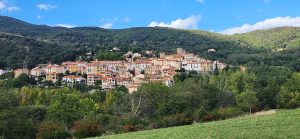
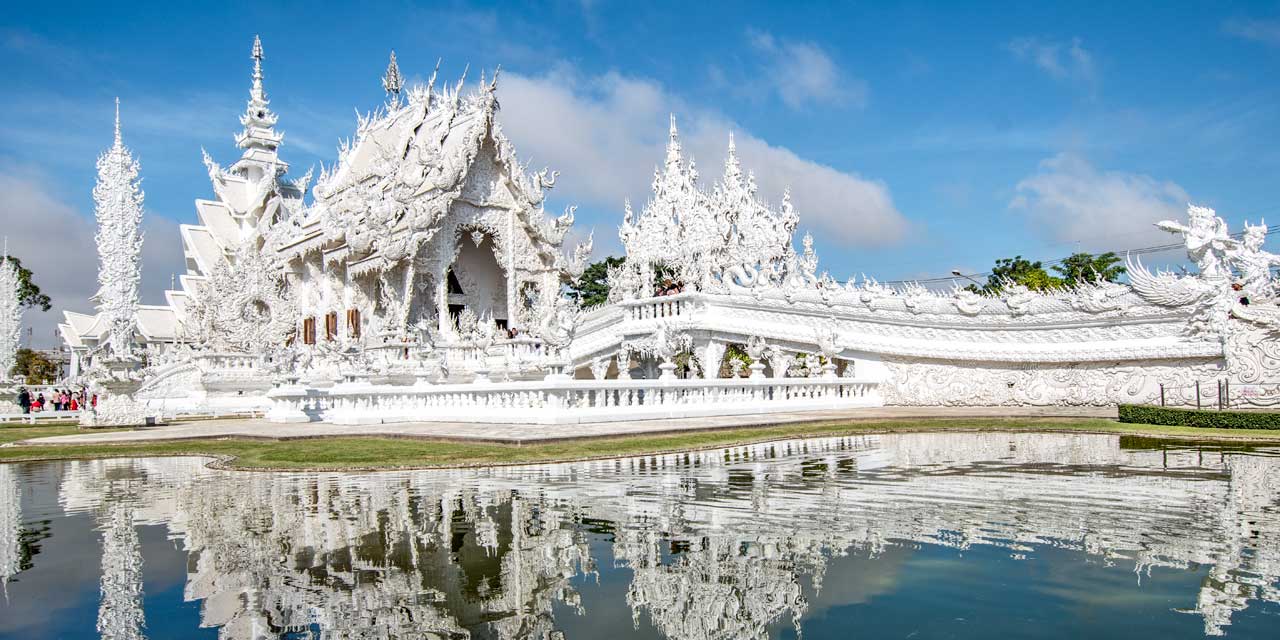
I spent 7am to 7:30pm on a tour from Chiang Mai to Chiang Rai to see some of the items on my list. The ride was about 3 1/2 hours each way so it was a very long day, and a bus ride down the curving highways that would leave anyone with motion sickness in bad shape.
Along the way we stopped at the Long Neck Karen tribe, escaping Myanmar conflict, they settled in the mountains of northern Thailand. What distinguishes these villages are the adorned women. With slender necks embellished by golden brass rings, they symbolize cultural identity. Beyond adornment, the women showcase artistry through intricate weaved goods, reflecting unique stories. It was interesting but felt more like a tourist stop. They sold wares, but were also gracious in allowing photos to be taken. Loved the artwork that graced the entrance to the village…


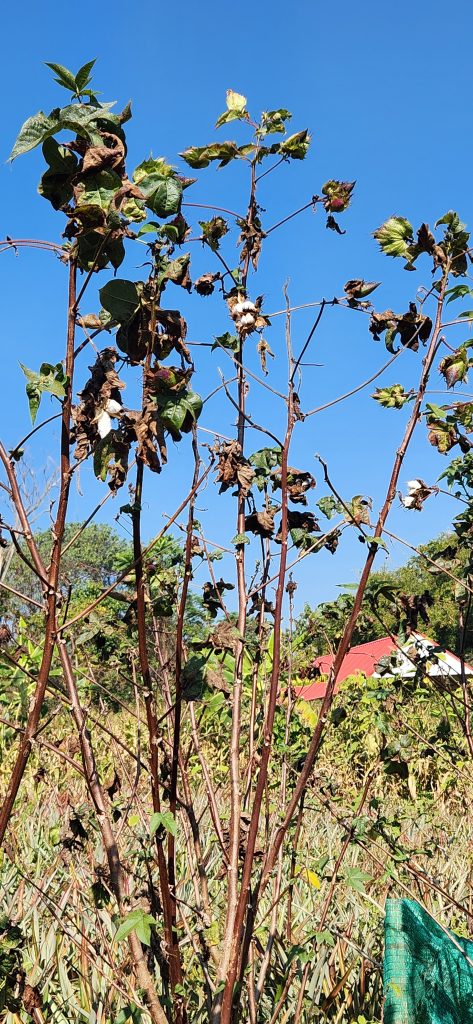
WHITE TEMPLE From the village we went to the White Temple, Wat Rong Khun. The build started 27 years ago and is not expected to be completed until 2070. It is absolutely beautiful!
It is a striking contemporary Buddhist temple designed by artist Chalermchai Kositpipat. Unlike traditional temples, it gleams in pure white, symbolizing the purity of the Buddha, with intricate glass mosaics that reflect light like diamonds. Its elaborate details blend classic Thai architecture with modern artistic elements, making it both a spiritual site and a unique work of art. The temple represents the path from earthly temptations toward enlightenment.
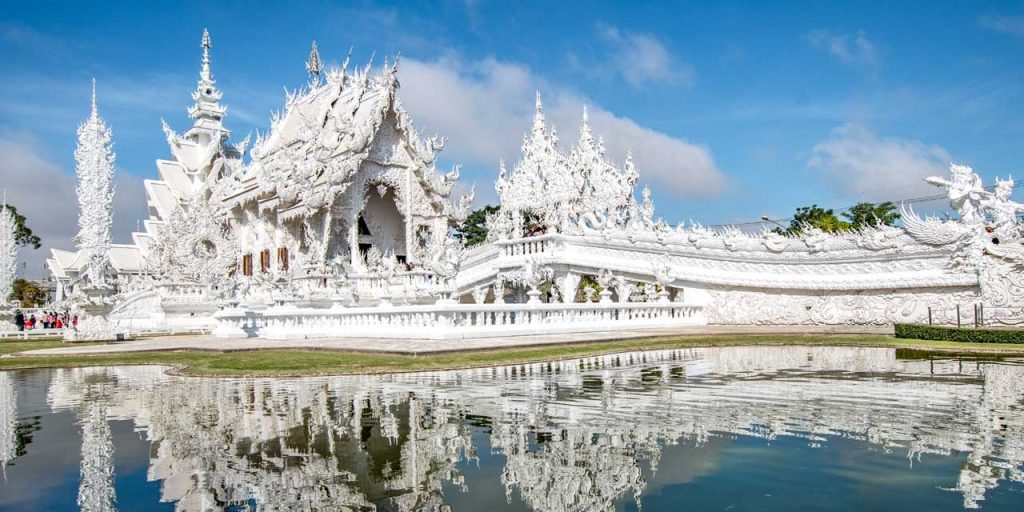

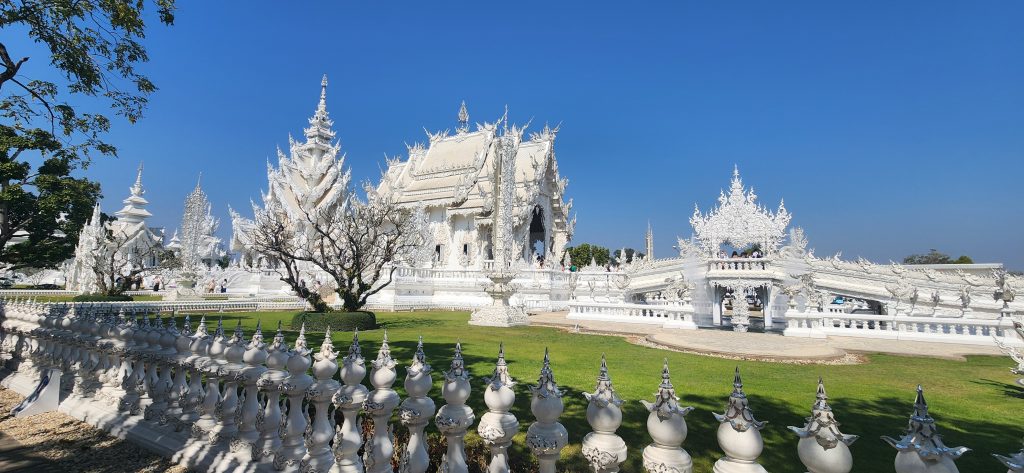

BLUE TEMPLE – Known for its striking modern artistic design, the temple’s construction was initiated by the local community in 1996 to replace an old abandoned temple which previously stood on the site, though construction did not start until 2005. Its final design was realized by local artist Phuttha Kabkaew, who learned from Chalermchai Kositpipat while working on his famous Wat Rong Khun, just outside the city. Wat Rong Suea Ten’s main building was completed in 2016, and follows in the unconventional “neo-traditional” style of Buddhist art pioneered by Chalermchai, employing lavishly ornamented sculptures and psychedelic visual imagery.
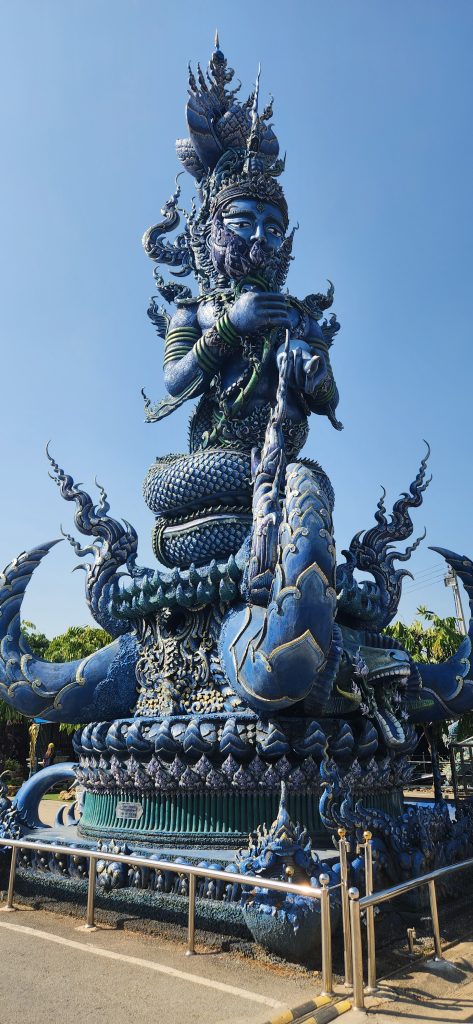


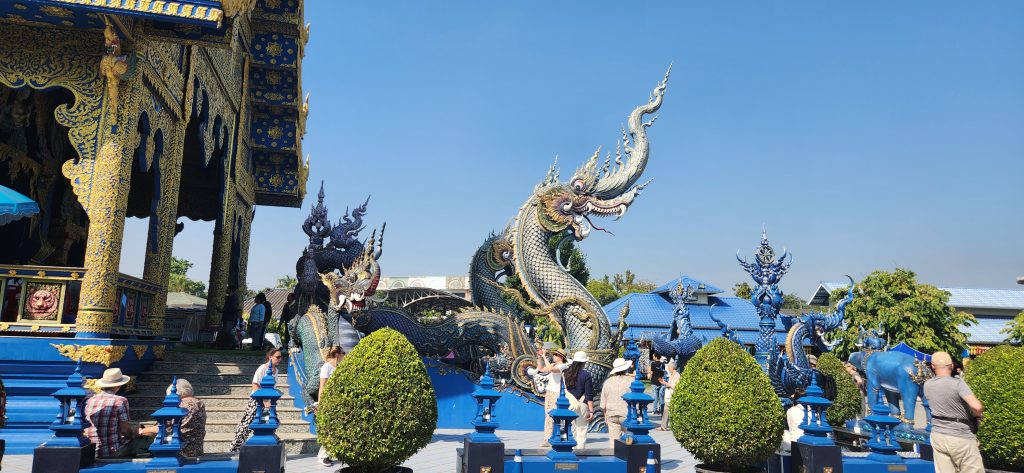
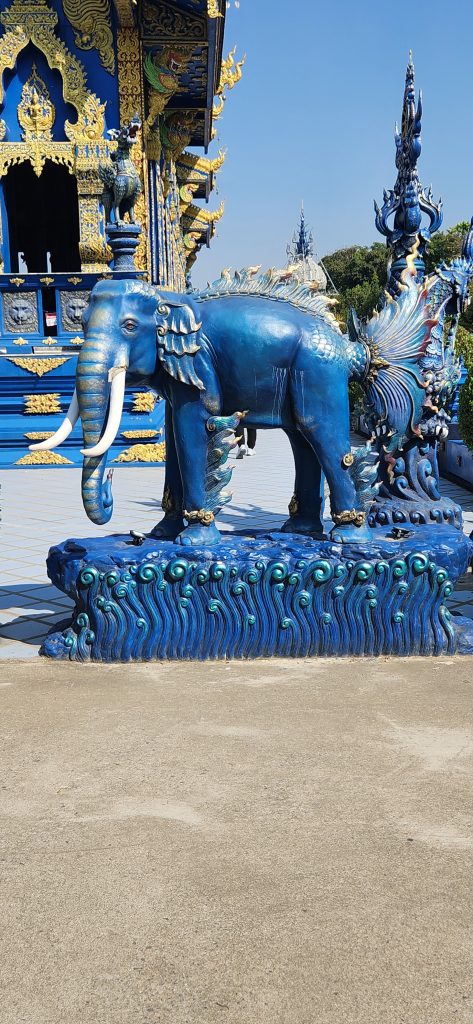
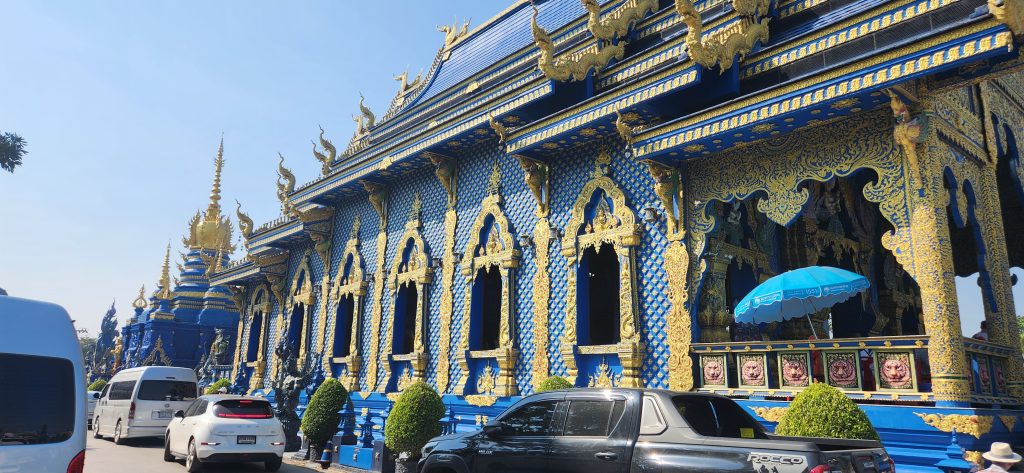
Travel on January 22, 2025